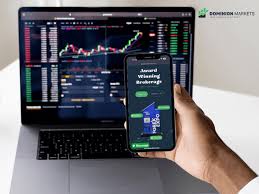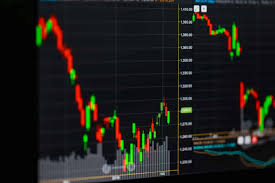
If you’re looking to venture into the world of Forex trading, understanding the nuances of a forex trading account Trading Brokers is crucial. A Forex trading account is your gateway to the forex market, providing the tools and platforms needed to buy and sell currencies effectively. This article will take you through the essentials of forex trading accounts, including how to open one, the types of accounts available, and tips for maximizing your trading success.
What is a Forex Trading Account?
A Forex trading account is an investment account specifically designed for trading currencies in the foreign exchange market. This account is essential for individuals and institutions looking to participate in currency trading. Forex accounts can be opened through various brokerages, offering traders different features based on their trading needs and styles.
Types of Forex Trading Accounts
When considering opening a Forex trading account, it’s important to understand the different types available. Here are the most common types:
1. Demo Accounts
A demo account is a simulated trading account used for practice purposes. This type of account allows traders to make trades using virtual money, helping them to learn about trading platforms, strategies, and market dynamics without risking real money. Most brokers offer demo accounts for a limited time.
2. Standard Accounts
Standard accounts are the most common type of Forex trading account. They require a minimum deposit (which varies by broker) and allow for trading with real money. Standard accounts usually offer the full range of trading tools, platforms, and resources.
3. Mini Accounts
Mini accounts allow traders to trade a smaller volume of currency, usually with a lower minimum deposit. This type is particularly suitable for beginner traders who want to manage their risk while developing their strategies in the real market.
4. Micro Accounts
Micro accounts are similar to mini accounts but allow even smaller trading volumes, facilitating very low-risk trading for novice traders. These accounts enableusers to gain market experience without a significant financial commitment.
5. Managed Accounts

Managed accounts involve hiring a professional trader or a management team to trade on your behalf. This is ideal for individuals who lack the time or knowledge to trade themselves. However, it usually comes with higher fees and requires a higher initial investment.
How to Open a Forex Trading Account
Opening a Forex trading account involves several steps that are generally straightforward. Follow these steps to set up your account:
Step 1: Choose a Reliable Broker
Research and select a brokerage company that suits your trading needs. Compare fees, services, account types, and trading platforms. Look for reviews and ensure that the broker is regulated by a reputable financial authority.
Step 2: Complete the Application Form
Once you choose a broker, complete their application form. This may include personal information, financial background, and trading experience. Ensure that all information is accurate as brokers often verify this information.
Step 3: Verify Your Identity
To comply with financial regulations, brokers typically require identity verification. You may need to submit identification documents such as a government-issued ID and proof of address, like a utility bill.
Step 4: Deposit Funds
After your identity is verified, you’ll need to fund your account. Most brokers offer various deposit methods, including bank transfer, credit/debit cards, and e-wallets. Choose the method that works best for you and ensure you meet the minimum deposit requirements.
Step 5: Start Trading
Once your account is funded, you can access your trading platform. Familiarize yourself with the tools available and begin making your trades. It’s advisable to start small while you learn about market dynamics and strategies.
Forex Trading Tips for Beginners

As a beginner in Forex trading, here are several tips to help you navigate the market successfully:
1. Educate Yourself
Learn the fundamentals of Forex trading, including market analysis, trading strategies, and risk management. Many online resources, courses, and books are available to help you enhance your knowledge.
2. Develop a Trading Plan
A trading plan includes your trade objectives, strategies, risk tolerance, and evaluation methods. A well-thought-out plan is essential for consistent trading success.
3. Practice with a Demo Account
Utilize a demo account to practice your strategies without financial risk. This will help you gain confidence and understand the mechanics of trading before using real money.
4. Manage Your Risk
Always implement risk management strategies, such as setting stop-loss and take-profit orders. Avoid risking more than 1-2% of your trading capital on a single trade.
5. Stay Updated
Stay informed about economic indicators, geopolitical events, and other factors that affect currency prices. Knowledge of the news can provide insights into potential market movements.
Conclusion
Opening a Forex trading account is the first step into the exciting world of currency trading. By understanding the different types of accounts, how to open one, and implementing effective trading strategies, you can enhance your chances of success in this competitive market.
Remember, trading carries risks, and it’s crucial to educate yourself continuously, remain disciplined, and never invest more than you can afford to lose. The Forex market offers great potential for profit, but success requires rigorous learning and strategic planning.